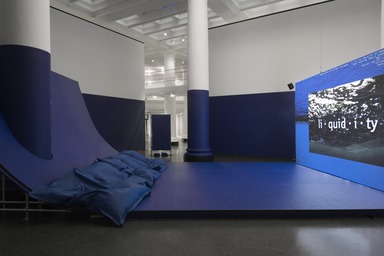

Infinite Blue, November 25, 2016 through November 05, 2018 (Image: DIG_E_2016_Infinite_Blue_01_PS11.jpg Brooklyn Museum, Brooklyn, New York. (Photo: Jonathan Dorado) photograph, 2016)
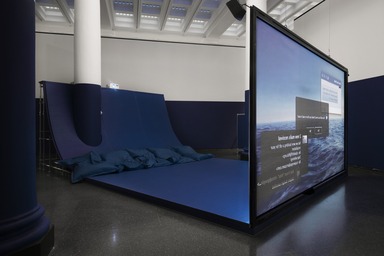
Infinite Blue, November 25, 2016 through November 05, 2018 (Image: DIG_E_2016_Infinite_Blue_02_PS11.jpg Brooklyn Museum, Brooklyn, New York. (Photo: Jonathan Dorado) photograph, 2016)

Infinite Blue, November 25, 2016 through November 05, 2018 (Image: DIG_E_2016_Infinite_Blue_04_PS11.jpg Brooklyn Museum, Brooklyn, New York. (Photo: Jonathan Dorado) photograph, 2016)

Infinite Blue, November 25, 2016 through November 05, 2018 (Image: DIG_E_2016_Infinite_Blue_05_PS11.jpg Brooklyn Museum, Brooklyn, New York. (Photo: Jonathan Dorado) photograph, 2016)

Infinite Blue, November 25, 2016 through November 05, 2018 (Image: DIG_E_2016_Infinite_Blue_06_PS11.jpg Brooklyn Museum, Brooklyn, New York. (Photo: Jonathan Dorado) photograph, 2016)
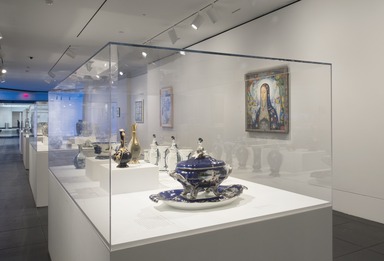
Infinite Blue, November 25, 2016 through November 05, 2018 (Image: DIG_E_2016_Infinite_Blue_07_PS11.jpg Brooklyn Museum, Brooklyn, New York. (Photo: Jonathan Dorado) photograph, 2016)

Infinite Blue, November 25, 2016 through November 05, 2018 (Image: DIG_E_2016_Infinite_Blue_08_PS11.jpg Brooklyn Museum, Brooklyn, New York. (Photo: Jonathan Dorado) photograph, 2016)

Infinite Blue, November 25, 2016 through November 05, 2018 (Image: DIG_E_2016_Infinite_Blue_09_PS11.jpg Brooklyn Museum, Brooklyn, New York. (Photo: Jonathan Dorado) photograph, 2016)
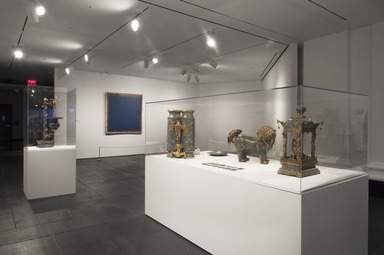
Infinite Blue, November 25, 2016 through November 05, 2018 (Image: DIG_E_2016_Infinite_Blue_10_PS11.jpg Brooklyn Museum, Brooklyn, New York. (Photo: Jonathan Dorado) photograph, 2016)

Infinite Blue, November 25, 2016 through November 05, 2018 (Image: DIG_E_2016_Infinite_Blue_11_PS11.jpg Brooklyn Museum, Brooklyn, New York. (Photo: Jonathan Dorado) photograph, 2016)

Infinite Blue, November 25, 2016 through November 05, 2018 (Image: DIG_E_2016_Infinite_Blue_12_PS11.jpg Brooklyn Museum, Brooklyn, New York. (Photo: Jonathan Dorado) photograph, 2016)
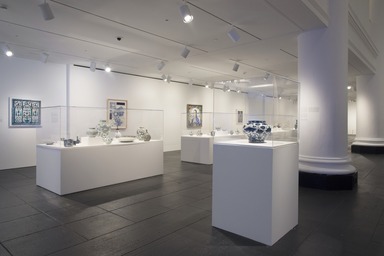
Infinite Blue, November 25, 2016 through November 05, 2018 (Image: DIG_E_2016_Infinite_Blue_13_PS11.jpg Brooklyn Museum, Brooklyn, New York. (Photo: Jonathan Dorado) photograph, 2016)

Infinite Blue, November 25, 2016 through November 05, 2018 (Image: DIG_E_2016_Infinite_Blue_14_PS11.jpg Brooklyn Museum, Brooklyn, New York. (Photo: Jonathan Dorado) photograph, 2016)

Infinite Blue, November 25, 2016 through November 05, 2018 (Image: DIG_E_2016_Infinite_Blue_15_PS11.jpg Brooklyn Museum, Brooklyn, New York. (Photo: Jonathan Dorado) photograph, 2016)

Infinite Blue, November 25, 2016 through November 05, 2018 (Image: DIG_E_2016_Infinite_Blue_16_PS11.jpg Brooklyn Museum, Brooklyn, New York. (Photo: Jonathan Dorado) photograph, 2016)

Infinite Blue, November 25, 2016 through November 05, 2018 (Image: DIG_E_2016_Infinite_Blue_17_PS11.jpg Brooklyn Museum, Brooklyn, New York. (Photo: Jonathan Dorado) photograph, 2016)

Infinite Blue, November 25, 2016 through November 05, 2018 (Image: DIG_E_2016_Infinite_Blue_18_PS11.jpg Brooklyn Museum, Brooklyn, New York. (Photo: Jonathan Dorado) photograph, 2016)

Infinite Blue, November 25, 2016 through November 05, 2018 (Image: DIG_E_2016_Infinite_Blue_19_PS11.jpg Brooklyn Museum, Brooklyn, New York. (Photo: Jonathan Dorado) photograph, 2016)
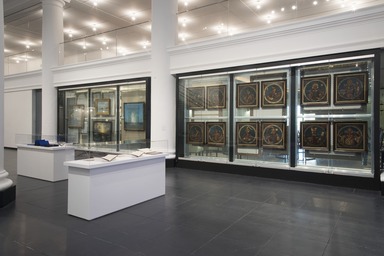
Infinite Blue, November 25, 2016 through November 05, 2018 (Image: DIG_E_2016_Infinite_Blue_20_PS11.jpg Brooklyn Museum, Brooklyn, New York. (Photo: Jonathan Dorado) photograph, 2016)

Infinite Blue, November 25, 2016 through November 05, 2018 (Image: DIG_E_2016_Infinite_Blue_21_PS11.jpg Brooklyn Museum, Brooklyn, New York. (Photo: Jonathan Dorado) photograph, 2016)

Infinite Blue, November 25, 2016 through November 05, 2018 (Image: DIG_E_2016_Infinite_Blue_22_PS11.jpg Brooklyn Museum, Brooklyn, New York. (Photo: Jonathan Dorado) photograph, 2016)

Infinite Blue, November 25, 2016 through November 05, 2018 (Image: DIG_E_2016_Infinite_Blue_23_PS11.jpg Brooklyn Museum, Brooklyn, New York. (Photo: Jonathan Dorado) photograph, 2016)
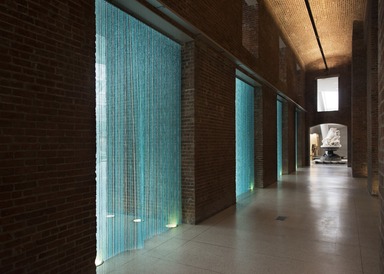
Infinite Blue, November 25, 2016 through November 05, 2018 (Image: DIG_E_2016_Infinite_Blue_24_PS11.jpg Brooklyn Museum, Brooklyn, New York. (Photo: Jonathan Dorado) photograph, 2016)

Infinite Blue, November 25, 2016 through November 05, 2018 (Image: DIG_E_2016_Infinite_Blue_25_PS11.jpg Brooklyn Museum, Brooklyn, New York. (Photo: Jonathan Dorado) photograph, 2016)

Infinite Blue, November 25, 2016 through November 05, 2018 (Image: DIG_E_2016_Infinite_Blue_26_PS11.jpg Brooklyn Museum, Brooklyn, New York. (Photo: Jonathan Dorado) photograph, 2016)

Infinite Blue, November 25, 2016 through November 05, 2018 (Image: DIG_E_2016_Infinite_Blue_27_PS11.jpg Brooklyn Museum, Brooklyn, New York. (Photo: Jonathan Dorado) photograph, 2016)
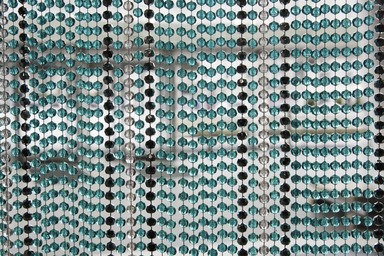
Infinite Blue, November 25, 2016 through November 05, 2018 (Image: DIG_E_2016_Infinite_Blue_28_PS11.jpg Brooklyn Museum, Brooklyn, New York. (Photo: Jonathan Dorado) photograph, 2016)

Infinite Blue, November 25, 2016 through November 05, 2018 (Image: DIG_E_2016_Infinite_Blue_29_PS11.jpg Brooklyn Museum, Brooklyn, New York. (Photo: Jonathan Dorado) photograph, 2016)

Infinite Blue, November 25, 2016 through November 05, 2018 (Image: DIG_E_2016_Infinite_Blue_30_PS11.jpg Brooklyn Museum, Brooklyn, New York. (Photo: Jonathan Dorado) photograph, 2016)

Infinite Blue, November 25, 2016 through November 05, 2018 (Image: DIG_E_2016_Infinite_Blue_31_PS11.jpg Brooklyn Museum, Brooklyn, New York. (Photo: Jonathan Dorado) photograph, 2016)

Infinite Blue, November 25, 2016 through November 05, 2018 (Image: DIG_E_2016_Infinite_Blue_32_PS11.jpg Brooklyn Museum, Brooklyn, New York. (Photo: Jonathan Dorado) photograph, 2016)

Infinite Blue, November 25, 2016 through November 05, 2018 (Image: DIG_E_2016_Infinite_Blue_33_PS11.jpg Brooklyn Museum, Brooklyn, New York. (Photo: Jonathan Dorado) photograph, 2016)

Infinite Blue, November 25, 2016 through November 05, 2018 (Image: DIG_E_2016_Infinite_Blue_34_PS11.jpg Brooklyn Museum, Brooklyn, New York. (Photo: Jonathan Dorado) photograph, 2016)

Infinite Blue, November 25, 2016 through November 05, 2018 (Image: DIG_E_2016_Infinite_Blue_35_PS11.jpg Brooklyn Museum, Brooklyn, New York. (Photo: Jonathan Dorado) photograph, 2016)

Infinite Blue, November 25, 2016 through November 05, 2018 (Image: DIG_E_2016_Infinite_Blue_36_PS11.jpg Brooklyn Museum, Brooklyn, New York. (Photo: Jonathan Dorado) photograph, 2016)

Infinite Blue, November 25, 2016 through November 05, 2018 (Image: DIG_E_2016_Infinite_Blue_37_PS11.jpg Brooklyn Museum, Brooklyn, New York. (Photo: Jonathan Dorado) photograph, 2016)

Infinite Blue, November 25, 2016 through November 05, 2018 (Image: DIG_E_2016_Infinite_Blue_38_PS11.jpg Brooklyn Museum, Brooklyn, New York. (Photo: Jonathan Dorado) photograph, 2016)
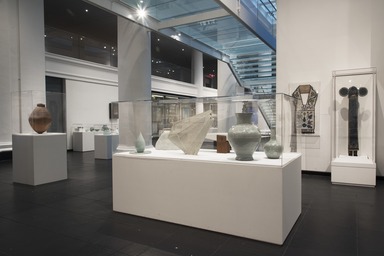
Infinite Blue, November 25, 2016 through November 05, 2018 (Image: DIG_E_2016_Infinite_Blue_39_PS11.jpg Brooklyn Museum, Brooklyn, New York. (Photo: Jonathan Dorado) photograph, 2016)

Infinite Blue, November 25, 2016 through November 05, 2018 (Image: DIG_E_2016_Infinite_Blue_40_PS11.jpg Brooklyn Museum, Brooklyn, New York. (Photo: Jonathan Dorado) photograph, 2016)

Infinite Blue, November 25, 2016 through November 05, 2018 (Image: DIG_E_2016_Infinite_Blue_41_PS11.jpg Brooklyn Museum, Brooklyn, New York. (Photo: Jonathan Dorado) photograph, 2016)

Infinite Blue, November 25, 2016 through November 05, 2018 (Image: DIG_E_2016_Infinite_Blue_42_PS11.jpg Brooklyn Museum, Brooklyn, New York. (Photo: Jonathan Dorado) photograph, 2016)

Infinite Blue, November 25, 2016 through November 05, 2018 (Image: DIG_E_2016_Infinite_Blue_43_PS11.jpg Brooklyn Museum, Brooklyn, New York. (Photo: Jonathan Dorado) photograph, 2016)

Infinite Blue, November 25, 2016 through November 05, 2018 (Image: DIG_E_2016_Infinite_Blue_44_PS11.jpg Brooklyn Museum, Brooklyn, New York. (Photo: Jonathan Dorado) photograph, 2016)

Infinite Blue, November 25, 2016 through November 05, 2018 (Image: DIG_E_2016_Infinite_Blue_45_PS11.jpg Brooklyn Museum, Brooklyn, New York. (Photo: Jonathan Dorado) photograph, 2016)
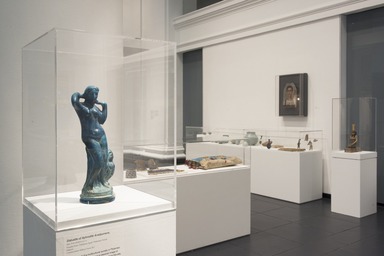
Infinite Blue, November 25, 2016 through November 05, 2018 (Image: DIG_E_2016_Infinite_Blue_46_PS11.jpg Brooklyn Museum, Brooklyn, New York. (Photo: Jonathan Dorado) photograph, 2016)

Infinite Blue, November 25, 2016 through November 05, 2018 (Image: DIG_E_2016_Infinite_Blue_47_PS11.jpg Brooklyn Museum, Brooklyn, New York. (Photo: Jonathan Dorado) photograph, 2016)

Infinite Blue, November 25, 2016 through November 05, 2018 (Image: DIG_E_2017_Infinite_Blue_48_PS11.jpg Brooklyn Museum, Brooklyn, New York. (Photo: Jonathan Dorado) photograph, 2016)
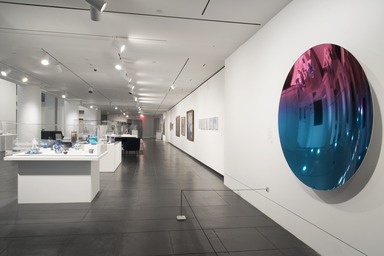
Infinite Blue, November 25, 2016 through November 05, 2018 (Image: DIG_E_2017_Infinite_Blue_49_PS11.jpg Brooklyn Museum, Brooklyn, New York. (Photo: Jonathan Dorado) photograph, 2016)

Infinite Blue, November 25, 2016 through November 05, 2018 (Image: DIG_E_2017_Infinite_Blue_50_PS11.jpg Brooklyn Museum, Brooklyn, New York. (Photo: Jonathan Dorado) photograph, 2016)

Infinite Blue, November 25, 2016 through November 05, 2018 (Image: DIG_E_2017_Infinite_Blue_51_PS11.jpg Brooklyn Museum, Brooklyn, New York. (Photo: Jonathan Dorado) photograph, 2016)

Infinite Blue, November 25, 2016 through November 05, 2018 (Image: DIG_E_2017_Infinite_Blue_52_PS11.jpg Brooklyn Museum, Brooklyn, New York. (Photo: Jonathan Dorado) photograph, 2016)

Infinite Blue, November 25, 2016 through November 05, 2018 (Image: DIG_E_2017_Infinite_Blue_53_PS11.jpg Brooklyn Museum, Brooklyn, New York. (Photo: Jonathan Dorado) photograph, 2016)

Infinite Blue, November 25, 2016 through November 05, 2018 (Image: DIG_E_2017_Infinite_Blue_54_PS11.jpg Brooklyn Museum, Brooklyn, New York. (Photo: Jonathan Dorado) photograph, 2016)
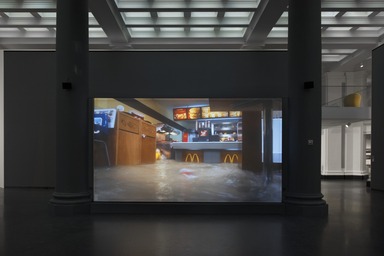
Infinite Blue, November 25, 2016 through November 05, 2018 (Image: DIG_E_2017_Infinite_Blue_55_PS11.jpg Brooklyn Museum, Brooklyn, New York. (Photo: Jonathan Dorado) photograph, 2016)

Infinite Blue, November 25, 2016 through November 05, 2018 (Image: DIG_E_2017_Infinite_Blue_56_PS11.jpg Brooklyn Museum, Brooklyn, New York. (Photo: Jonathan Dorado) photograph, 2016)

Infinite Blue, November 25, 2016 through November 05, 2018 (Image: DIG_E_2017_Infinite_Blue_57_PS11.jpg Brooklyn Museum, Brooklyn, New York. (Photo: Jonathan Dorado) photograph, 2016)
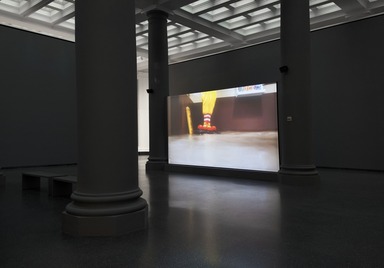
Infinite Blue, November 25, 2016 through November 05, 2018 (Image: DIG_E_2017_Infinite_Blue_58_PS11.jpg Brooklyn Museum, Brooklyn, New York. (Photo: Jonathan Dorado) photograph, 2016)

Infinite Blue, November 25, 2016 through November 05, 2018 (Image: DIG_E_2017_Infinite_Blue_59_PS11.jpg Brooklyn Museum, Brooklyn, New York. (Photo: Jonathan Dorado) photograph, 2016)
Infinite Blue
-
Blue Gods of Egypt
Egyptians described their gods as having gold skin and hair of lapis lazuli. Thus, Figure of the Goddess Nephthys, on view here, has hair rendered in blue. The deep-blue semiprecious stone was similarly the material of divine eyebrows, eyelashes, and facial hair. The dark blue glass inlays on Beard from the Statue of a God represent lapis lazuli. While men of the Egyptian nobility usually shaved their faces during life on earth, long, tightly braided beards with an upturned end were commonly worn by male gods such as Osiris, ruler of the underworld. Accordingly, images of the deceased, who became associated with Osiris after being accepted into the afterlife, often include the plaited and curved beard. Likewise, the colorful glass of Right Eye from an Anthropoid Coffin, which was oncepart of a human-shaped coffin, imitates the costly blue stone. Its color implies that the deceased passed all the necessary ordeals and is now among the gods and equated with Osiris.
Occasionally, Egyptian gods also appear with blue skin, its color pointing to their celestial nature. The blue skin of the god on Stela of Ptahmay with Amun-Re symbolizes heaven and Amun-Re’s role as bringer of the Nile’s flood. The platform below his chair and feet suggests that the stela represents a seated statue of Amun-Re—rather than the god himself—made partly of lapis lazuli. Similarly, as a deity closely associated with the moon, the ibis-headed god Thoth on Funerary Stela was at times represented with blue skin. -
Laundry Blue
In many places in the world, naturally occurring blue pigment from plant or mineral sources is scarce or difficult to extract. Although indigo was cultivated and traded in parts of Africa and island Southeast Asia, it worked much better as a textile dye than as a paint. Because of this, blue pigment is rarely seen on early African and Pacific Islands objects.
In the mid- to late nineteenth century, European companies began to manufacture synthetic blue pigments. One of their uses was as a laundry agent, added to yellowed fabrics to make them appear whiter. “Laundry blue” is a generic term, and different manufacturers employed diverse pigments to create it, such as synthetic ultramarine, indigo, smalt, and Prussian blue. When combined with materials like starch or gum, the pigment could be pressed into cubes for easy transport and use.
Although laundry blue was originally brought to Africa and the Pacific as a laundry additive, this new and relatively cheap source of blue pigment appealed to artists worldwide. Laundry blues were quickly taken up as artist’s materials in places as disparate as Liberia, Papua New Guinea, the Democratic Republic of the Congo, and Vanuatu. -
Artist Books
Artists passionate about the environment and climate change express their concerns through books, as well as other art forms. A few examples of artist books are on display in this case.
Through text and images, these books reflect upon life forms beyond the concrete and glass cities around the world. Each artist explores the natural world that surrounds us, invoking global climate issues facing all of us today and in the future. -
Blue in Fashion
The color blue has a long history in clothing. Blue-colored textiles have been achieved since antiquity with dyes made from the leaves of woad or indigo plants. In Europe, woad was cultivated and used to dye fabrics for clothing worn by both peasants and servant classes (cheaper fabrics in duller tones) and members of the elite classes (costly fabrics in more intense tones). In the sixteenth century, trade with Asia brought indigo—and the stronger blue color it yielded—to the Western market, negatively affecting the fortunes of the woad industry. To meet the high demand for indigo, by the late sixteenth century the Spanish and French began to cultivate it, using enslaved labor, on plantations in their colonies in South and Central America and later in the Caribbean and the American south.
By the eighteenth century, blue had become the most common color worn throughout Europe and was particularly favored among the fashionable classes. Prussian blue, the first modern synthetic pigment, had joined indigo as a source of blue coloration in textiles. When chemist William Perkin discovered the first synthetic aniline dyes in 1856, it heralded a new era of vivid, saturated colors in fashion, with blue being among the most prevalent.
The European and American garments and accessories in this gallery, along with several painted portraits of figures clothed in blue, highlight instances of the color in Western fashion. Unlike red, white, purple, or black, blue appears to have had little symbolic value in Western dress codes until the twelfth century, when artists began using it for the Virgin Mary’s robes, to convey her divinity (see paintings in adjacent gallery). Blue soon became associated as well with royalty and, by the end of the fourteenth century it was, so to speak, the new black—considered to be a moral and honest color for clothes, conferring seriousness and dignity to those who wore it. In the modern era and through today, the color’s popularity owes in part to its sartorial multivalence, signifying such seemingly unrelated things as political allegiances (“royal blue”), class and labor associations (“blue collar,” “blue jeans,” “blue blazer”), gender (blue for boys, bluestockings), and military and authority figures (“boys in blue”). -
Indigo Textiles
Indigo, a natural dye extracted from plants, has been used to make blue textiles for thousands of years. Pre-Columbian artists dyed textiles with indigo as early as 4000 B.C.E., and indigo-dyed linen has been found in Egyptian mummy wrappings as early as the New Kingdom (circa 1550–1068 B.C.E.). Although “true indigo” (Indigofera tinctoria) is found primarily in India and tropical Asia, many plant species throughout the world have been grown and traded to create similar blue dyes, known collectively as indigo.
The process of making indigo dye is remarkably similar worldwide, despite the variety of plants employed: leaves are fermented, and the resulting paste is used to create a liquid dye bath for fibers. At first this dye appears blue-green, but contact with the air oxidizes the indigo pigment and turns fibers the deep blue so valued around the world. Indigo is prized as a dye because it is resistant to fading. Another desirable feature is its versatility: it can be used to dye animal fibers, such as wool and silk, as well as plant fibers, such as cotton and linen.
Indigo was big business, first for the traders who brought it from India to the Middle East and Europe, then for the colonial powers who established indigo plantations in the Western hemisphere. For centuries, indigo was closely linked to the transatlantic slave trade: initially a status symbol in Europe, indigo-dyed fabric became far cheaper once it was produced by slave labor in the Americas. By the late nineteenth century, blue cottons came to be so inexpensive that they were adopted as standard attire for factory employees, leading to the term “blue-collar worker,” coined in the 1920s. -
Turquoise
Turquoise is a naturally green-blue stone found on all the continents except Antarctica. Unlike lapis lazuli, turquoise is more rarely used as a pigment. Like lapis, it can be carved, polished, and used to ornament jewelry and luxury objects. Several cultures value turquoise for its ethereal color.
In the ancient Eurasian world, turquoise was sourced in Iran and the Sinai Peninsula and sent to points east and west. Hence in China the stone was associated with the exotic lands at the other end of the Silk Routes, and Europeans named the material pierre turquoise (Turkish stone) after Turks who used it in their jewelry. The stone was prized in ancient Egypt, where imitation turquoise in the form of faience was also prevalent.
Turquoise was economically vital to Ancestral Puebloan peoples of the ancient American southwest, who mined it as early as 500 C.E. and traded it extensively. Often associated with water, a precious commodity for people living in the arid southwest, the stone is spiritually significant for Ancestral Puebloans and for the Hopi, Navajo, and Zuni peoples who now live there. Ancient Mesoamerican peoples also mined and traded turquoise, which is particularly common in Mixtec and Aztec inlay work. Although turquoise existed in pre-Columbian South America, it was less common than in North America, making it a material of considerable prestige and importance. -
Lapis Lazuli
Lapis lazuli is a naturally occurring, deep-blue stone that was long prized both as a material for carving and as a pigment for painting. Azurite was the only other deep-blue stone known to the ancient Eurasian world, but azurite was too soft to carve or polish, and when ground for pigment it was subject to color changes. Lapis was very much in demand throughout the Western world and Asia until the development of synthetic dyes.
For thousands of years, the sole source of lapis was a cluster of mines in what is now northeastern Afghanistan. The stone’s wide distribution offers evidence for the extent of international trade in the ancient world, as it appears in the deluxe arts of Mesopotamia and Egypt as early as the fourth millennium B.C.E. To reach Egypt, the stones would have traveled roughly five thousand miles, probably via a combination of river, land, and sea routes.
When ground as a pigment, lapis lazuli is known as ultramarine. This expensive, imported material was used sparingly in both European and Asian paintings, including several shown in this gallery. Although additional pockets of lapis have been found more recently in Russia and Chile, this semiprecious stone retains its value as the natural material that comes closest to mimicking the night sky. -
The Blue Gods of Hinduism and Buddhism
Although most Hindu and Buddhist gods have human traits, they also have characteristics that distinguish them from mere mortals: additional heads and arms, animal features, and unusual skin colors. Several Asian religions honor deities who are blue in appearance. Their distinctive color reflects the sky and ocean, the earthly wonders that come closest to expressing infinity. Blue also evokes religious ideals: clarity of vision and cool detachment from petty concerns.
The most important blue deity in Hinduism is Vishnu, associated with sky and sea. He comes to earth in the form of avatars: human or animal manifestations (all of them blue) who battle demons in order to preserve the universe. The most powerful avatar is Krishna, a charismatic hero and lover of women. -
Maya Blue
"Maya blue” is the name given by archaeologists to the blue pigment employed by the Maya starting around 150 C.E., the earliest known evidence of its use. In ancient times, the color decorated pottery, sculptures, manuscripts, and architectural panels and was found primarily in ritual contexts as a symbol of sacredness, fertility, and regeneration. The pigment is made by combining indigo and palygorskite, a white clay, and heating them to 300 to 400 degrees Fahrenheit in order to bond them together and thereby make a durable color, as exemplified by the ancient figurines nearby. -
Wedgwood Ceramics
Josiah Wedgwood, founder of the firm that bears his name, was one of the early geniuses of the Industrial Revolution. He was a scientist who created many of the formulas for the clay bodies and glazes employed in his pottery. Remarkably, he was also a marketing innovator and invented many of the promotional techniques still used by contemporary manufacturers, such as sales catalogues, showrooms, and the hiring of guest designers to create greater allure and increase sales. His wares were sold throughout Europe and the United States. Other potteries in England and Europe—such as Sèvres in France, Meissen in Germany (see the teapot shown here), and Rörstrand in Sweden—closely imitated his designs. “Wedgwood blue,” even today, immediately invokes a distinctive color. -
Tiffany Glass
Louis Comfort Tiffany was the first American designer to attain international fame. His inventive iridescent glass, termed “Favrile,” was first produced in the mid-1890s and achieved almost instant fame through exposure at the great world’s fairs of the time; it was immediately acquired by collectors and museums in Europe and the United States. The iridescence was produced by sprinkling metallic dust on the still-molten glass.
Tiffany glass vases were all handmade, but artisans replicated the forms and surface decoration dictated by Tiffany, a gifted studio master, if not personally a glassmaker. The vases acquired by the Brooklyn Museum in 1914 were selected by Tiffany himself and represent examples from the first years of his glass production through 1914. -
Egyptian Blue
The first synthetic color, “Egyptian blue” was known to artisans as early as 3250 b.c.e. Appearing in Egypt and soon after in Mesopotamia, it was created by mixing quartz, lime, a copper compound, and alkali flux. The mixture was then fired several times to about 1800 degrees Fahrenheit for many hours.
Although the manufacture of Egyptian blue is similar to that of glass and faience, it has certain distinguishing characteristics. Unlike faience, which has a glaze layer, Egyptian blue’s color is present throughout. And unlike glass, Egyptian blue is not glossy.
Producing Egyptian blue was a lengthy, laborious process that resulted in a bright blue paste, used to fashion objects, or a powder for making paint. Seldom were those objects as large as Bottle with Openwork Shell, shown here, a technical masterpiece made of several parts. More commonly, it was used for smaller figurines such as Heart Scarab with Scene of the Goddess Ma’at and a Phoenix.
While its properties as a pigment are known from tomb paintings dated to 2600 B.C.E., during the Roman Period such mummy portraits as Noblewoman, made with the encaustic technique, commonly used Egyptian blue for underpainting. -
Blue Celadon in Asia
Celadon is a Western term for the light green color found on many Asian ceramics. Most celadon ceramics are green, a color that was admired in China for its associations with ancient jade and bronze. But a skilled ceramics technician can also create surfaces that are a light, ethereal blue. At certain moments in history, connoisseurs most highly prized the celadon wares that tended toward blue. These luminous objects offered something like the experience of holding a piece of the sky in one’s hands.
Several types of Chinese wares could assume a blue appearance. Some, like Jun ware, Qingbai wares, and later so-called clair de lune wares are almost always blue. Others, like Longquan and Guan wares, were more often green, with blue pieces a rarity. Chinese celadons were rarely decorated, reflecting the Confucian values of restraint, rectitude, and balance. Celadon glazes were also seen as emblematic of the past and became particularly popular during periods of upheaval; at such times, China’s elite longed for the great golden ages of the past, when ritual jades and bronzes signified power.
Chinese celadons of various types were exported through-out Asia. Production of the objects later spread from China to other regions, most notably Korea, Japan, and Thailand. Some of Japan’s finest celadon wares favor a bluer tone, and that blue would be taken to further heights by twentieth-century Japanese ceramicists.
Ceramic artists today find inspiration in Chinese celadons of the Song dynasty as well as Korean celadons of the Goryeo dynasty. In Japan, potters such as Fukami Sueharu, Kawase Shinobu, and Akira Yagi—all represented here—have cited Song dynasty celadons as a primary influence on their work. Their use of clear blue glaze against bright white porcelain creates effects that are at once ice-like and cloud-like. -
Glass Beads Around the World
Glass beads have a complex history among the indigenous cultures of Africa, the Americas, and the Pacific Islands. Glass was little known in these regions prior to European contact, but once introduced, the beads appealed to indigenous artists by virtue of their uniformity, convenience, and wide array of colors. Blue beads in particular were popular because the color was rarely found in nature.
The spread of glass beads is closely tied to when and how Europeans colonized different regions of the world, starting in the 1500s. Explorers, conquerors, traders, and missionaries brought glass beads as one of many trade items. In turn, local tastes affected what Europeans produced, as indigenous artists in Africa and the Americas accepted or rejected certain bead shapes and colors.
Africa already had an early history of glass bead production and trade. However, beads remained scarce, and beadwork was primarily reserved for rulers and elites. But when mass quantities of European glass trade beads became available, African artists revolutionized their practices and elaborate beadwork flourished.
In the Americas, greater access to glass trade beads enabled women to cover entire surfaces of clothing and bags with colorful, intricate beaded designs. In Mexico and Central and South America, glass beads were treasured for embellishing ceremonial garments.
In the Pacific Islands, the glass bead trade was centered primarily in Melanesia. With increased European settle-ment in the mid- to late nineteenth century, artists in places such as New Guinea, Vanuatu, and the Solomon Islands began to incorporate European-manufactured beads into their art. -
English and American Glass
In the late sixteenth century, the Englishman George Ravenscroft revolutionized Western glass production and, by adding lead to his formula, achieved the bright, colorless glass we are familiar with today. London and then Bristol became important centers for the production of this new glass. Bristol, in particular, became known for its cobalt blue glass.
In colonial North America, English-made glass dominated the market, but as early as 1608, in Jamestown, Virginia, glass was being made here—America’s first industry. Glass production in the United States was limited until the Industrial Age, in the later nineteenth century, when large factories were established in Cambridge, Massachusetts; Toledo, Ohio; and Pittsburgh, Pennsylvania.
Throughout the nineteenth century, English-made glass continued to evolve, and masterly new techniques were invented. Among them were machine-cutting, to produce hard-edged, faceted colorless glass, still popular today; and cameo hand-carving of layered colored glass, to imitate ancient gemstones. -
Infinite Blue
The story of the color blue takes us on a journey through time and across geography. The works of art in Infinite Blue, from throughout the Brooklyn Museum’s global collection, feature blue in all its infinite variety—a fascinating strand of visual poetry running from ancient times to the present day.
The exhibition’s title draws on the connection between the color blue and ideas of spirituality in the book On the Spiritual in Art (1911–12) by Russian artist and theorist Vasily Kandinsky. Blue is often associated with the spiritual, since blue is the color of the heavens. In addition, works of art utilizing blue often embody other symbolic meanings that have evolved over time; in cultures dating back thousands of years, blue has signified not only the skies above, but also power, status, and beauty.
Yet as much as it may sometimes suggest the spiritual, this exhibition examining the color blue also pays close attention to earthly physical matter—the development of powdered pigments, liquid dyes, and other technological innovations that made it possible to produce blue in an artwork. The ability of cultures across the ages to make blue pigments, dyes, and glazes depended on the availability of raw materials dug up from the earth, such as lapis lazuli and cobalt, or extracted from plants, such as indigo. These materials, so often used to portray lofty ideas, were acquired by artists through the mundane reality of the marketplace, as new trade routes opened up to foreign lands. The spiritual and material aspects of blue thus combine to tell us stories about global history, cultural values, technological innovation, and international commerce. This cross-departmental survey includes objects from our holdings of Asian, Egyptian, American, Native American, African, and European art, among them paintings, sculpture, prints, drawings, the decorative arts, illuminated manuscripts, printed books, and contemporary art.
This is only the first phase of the exhibition, which will expand as subsequent chapters unfold, eventually almost filling the Museum’s first floor. These additions will amplify the themes and the scope of art on view. A selection of historical costumes from the renowned Brooklyn Museum Costume Collection, now housed in the Costume Institute at the Metropolitan Museum of Art, will join the exhibition in the spring of 2017. Infinite Blue is also enhanced by the loan of several key examples of contemporary art.
Infinite Blue forms part of the series A Year of Yes, an expansive project intended to enrich how visitors to the Brooklyn Museum experience not only our special exhibitions but also our permanent collection. These goals were inspired by the multiple strategies deployed by second-wave feminists in their early approaches to rethinking arts institutions, which continue to influence curatorial methods to this day. It is in that spirit that this exhibition from the Museum’s holdings cuts through the traditional collection areas in an unexpected way, offering surprising connections across time and geography. -
Egyptian Faience
The ancient Egyptian word for faience, tjehnet, means “brilliant” or “dazzling.” Invented around 3500 B.C.E., faience was popular throughout Egypt’s long history in the production of beads, inlays, vessels, and statuettes. Although faience appears in various colors, blue was the most common. The bright blue hue is the natural result of adding copper compound to ground quartz and minerals such as lime and alkali during the process of manufacture. Firing the faience paste created a dazzling, glassy blue surface on an object, forming a natural glaze.
Often serving as a more affordable alternative to such semiprecious stones as turquoise and lapis lazuli, blue faience also carried significant meaning. Light blue color symbolized the life-giving waters of the Nile, as well as the sky. Accordingly, divinities linked with the sky are often portrayed with blue skin.
Because the Egyptians did not differentiate between light blue and green, the color naturally linked with vegetation, they used both colors to represent verdant life, regeneration, and rebirth. Dark blue was in turn interchangeable with black, the color of the mineral-rich soil, Nile silt, the night sky, and the primordial waters out of which life appeared. -
Blue Glass in the Ancient World
Unlike the clear, colorless glass that we are accustomed to today, blue was the most common color produced by ancient glassmakers. Fragile, and requiring specialized ingredients and technology, glass was an expensive rarity for thousands of years. Nonetheless, blue glass was less costly to acquire than other blue materials, such as lapis lazuli or turquoise, so it often stood in for those stones.
Glass objects were prized as rare, precious luxury items throughout the ancient world. Glass beads, inlays, and tiny amulets date as early as Egypt’s Predynastic Period (circa 4000–3100 B.C.E.). Formulated from the same ingredients as faience and the pigment known as “Egyptian blue,” but in different proportions, glass vessels and figurines were first manufactured in Egypt on a large scale during the Eighteenth Dynasty (circa 1479–1425 B.C.E.). Using either copper compound or cobalt, artisans achieved many shades of blue.
Glass technology spread from Mesopotamia to Egypt and the Eastern Mediterranean and into Europe, although chemical analysis reveals a wide variety of formulas. When we see iridescence on ancient glass, it is usually a byproduct of burial, not an original or intended feature of how the glass was manufactured.
Meanwhile, in southern and eastern Asia, various cultures developed glass technology independently, usually with cobalt- and copper-based blues. Glass vessels were not as widely used in these regions as they were in Europe and the Eastern Mediterranean, but glass was still valued, and Indian Ocean shipwrecks reveal that bricks of glass were widely traded as a raw material. -
Blue-and-White Ceramics in the Middle East
The use of cobalt to decorate ceramics almost certainly originated in the Middle East, and early Iranian ceramics, traded on the Silk Routes, likely inspired the Chinese to experiment with the pigment. Unlike their Chinese counterparts, Persian and Turkish decorators often used underglaze cobalt in conjunction with a turquoise color made from copper oxide, and because these two pigments tended to smear during firing, they used black iron pigment for finer outlines.
Beginning in the late thirteenth century, when the Mongols ruled both China and Iran, the Middle East became one of China’s most avid markets for blue-and-white ceramics. Small ships, called dhows, made the perilous trip through the Indian Ocean, laden with porcelains. Some local potters attempted to make copies of Chinese styles, but their results look very different because Middle Eastern ceramics are usually made of fritware, a glassy clay composite that is rarely as white as porcelain. Most Persian and Turkish ceramics have a layer of white painted over the clay. Because the underglaze cobalt decorations are painted on top of this white coating, they often look paler and less precise than their Chinese prototypes. Some of the finest later traditions of Middle Eastern ceramic-making exploit the almost wet quality of the white-painted ground, creating wares that feel very sumptuous. -
Aizuri-e: Prussian Blue in Japanese Prints
The introduction of the vibrant chemical pigment “Prussian” or “Berlin” blue in 1829 changed the history of the Japanese print forever.
Up until that point, plant-based blue dyes, such as day-flower and indigo, had been the only choice for printers in Japan, but those dyes tended to discolor quickly into shades of brown or green. Prussian blue, a synthetic pigment invented in Germany, is more vibrant and durable. The importation of this color expanded the realm of color possibilities for printers and allowed them greater freedom of expression: Katsushika Hokusai’s iconic woodblock print The Great Wave off Kanagawa (1830–33) would not have been possible without this technological innovation.
Early excitement about Prussian blue led to a genre of all-blue or mostly blue woodblock prints called aizuri-e. Scholarly evidence suggests that the earliest aizuri-e were landscapes in a Chinese style, apparently imitating decorations found on blue-and-white porcelains. But soon this popular trend was applied to other types of prints as well. In this moment of discovery in nineteenth-century Japan, artists used a Western technology to suit and expand their own traditional practices. In turn, the resulting imagery of Japanese prints was later exported to Europe, where it had a resounding impact on Western art practices. -
Illuminated Manuscripts in Europe
This case displays an assortment of fifteenth- and sixteenth-century illuminated manuscripts from Italy, Flanders, and France. Portable and precious, these lavishly decorated books were intended for private devotion, and made primarily for wealthy patrons. Called Books of Hours, after the traditional times of prayer during the day, they generally combined text (prayers and psalms, usually in Latin) and illustration (often depicting the lives of Christ or the Virgin). They employed the finest of materials, including rare mineral pigments, gold, and vellum. Marginal decorations varied widely, and could include illusionistic renderings of plants, flowers, birds, and insects; or trompe-l’oeil architectural elements; or grotesques.
The selection of pages seen here demonstrates the different ways that blue was employed symbolically in Christian iconography, whether to describe Mary’s celestial mantle, heaven’s azure expanse, or the Holy Spirit’s divine aura. The vibrant colors used by the miniaturists have benefited from the books’ often lying closed, safe from the harmful effects of light: the reds, greens, and—notably for this exhibition—blues are remarkably well preserved. -
Blue and the Virgin Mary in European Art
Beginning around the twelfth century, artists in Europe regularly began using the color blue to depict the Virgin Mary’s garments. Blue continued to be used in this way for centuries, and the color is still closely associated with Mary in contemporary Christianity. The history behind this strong connection touches on both the symbolic values ascribed to the color blue and the rarity and cost of the materials used to make blue pigments.
Blue was frequently used as a background color for ancient architectural sculpture and wall paintings, and its resemblance to sky and water was recognized. However, blue appears to have been of little symbolic significance in early color systems. In the eyes of the Greeks and Romans, bright color of any kind was considered vulgar. This general view of color as decadent and deceptive continued to inform Western aesthetics after the fall of the Roman Empire in the fifth century. Mary was frequently dressed in a range of dark colors meant to convey her grief.
But over the next few centuries, as the cult of the Virgin grew, blue was transformed from a marginal to a major color in Western Marian imagery. Partly, this reflected the growing belief that color, a property induced by light, could thus serve as an expression of divine presence. Brilliant twelfth-century stained glass began to fill dark cathedrals with the heavenly colors thought to convey God’s radiance. The bright, clear blues (often derived from expensive cobalt) used for the Virgin’s robes were understood as signifying the celestial realm and thus her sanctity and purity as the queen of heaven.
The blue pigment increasingly used by artists in the thirteenth and fourteenth centuries was made from the semiprecious stone lapis lazuli, exported from the Badakhshan mines in Afghanistan. Called ultramarine (meaning “from beyond the sea”), it was expensive and beloved: “a color more noble, beautiful, and perfect than any other color,” wrote the artist Cennino Cennini in his late fourteenth-century treatise on painting. While artists also used other blue pigments such as azurite, ultramarine was the gold standard of blue, and wealthy patrons often stipulated where and in what concentration it was to be used in the paintings they commissioned. When painted in ultramarine, the material and symbolic value of the blue of the Virgin’s garments were united. -
The Blue of Jingtai: Cloisonné in China
Most of the opulent cloisonné vessels produced for the Chinese elite feature a distinctive turquoise blue as their principal color. The popularity of this blue has its roots in a combination of aesthetic, technological, and religious motives.
Cloisonné is a decorative technique of fusing colored glass to a metal surface. It was first developed in the Mediterranean basin around 1500 B.C.E. It became highly developed in the Byzantine Empire in the tenth and eleventh centuries and appears to have been transmitted to China via the maritime and overland Silk Routes. The earliest securely dated Chinese cloisonné is from the early fifteenth century. By the early Qing dynasty (1644–1911), imperial workshops in the Forbidden City in Beijing created some of the most lavish and technically sophisticated cloisonné objects.
Starting in the early Ming dynasty, most Chinese cloisonné objects featured colorful motifs on a blue background. The turquoise color became so prominent that the generic Chinese term for cloisonné is Jingtai lan, or “The Blue of the Jingtai Era,” referring to the reign of the Ming emperor Zhu Qiyu, known as the Jingtai emperor (ruled 1450–57), who supposedly preferred this color.
Chinese craftsmen had the materials and the technology to make many other colors, but turquoise predominated. It may have represented a watery setting for the lotus flowers that often decorated these wares, or a heavenly setting for the Buddhist emblems that were also prevalent. Or it may show the influence of Tibetan decorative arts, which are extremely colorful and elaborate, often featuring turquoise stones.
The Brooklyn Museum has one of the most important collections of Ming and Qing dynasty cloisonné outside of China—a gift presented to the Museum in 1909 by the well-known collector Samuel P. Avery, Jr. -
Blue-and-White Ceramics in Europe
Although some Asian porcelain reached Europe by overland trade through Venice during the early Renaissance, it was during the sixteenth century that European, especially Dutch, seagoing explorers brought large quantities of Asian blue-and-white porcelain to the West. Europeans were so enamored of these wares that by about 1602, potteries in Delft, the Netherlands, started to produce imitation blue-and-white ceramics. Delft wares were actually earthenware covered with a thick tin-based glaze that imitated the Asian porcelain ceramic body. In Delft, Asian forms and decoration were imitated rather closely, but soon artists began to produce entirely new forms and decorations with Western themes. -
Medieval Cloisonné
Cloisonné, a process of decorating metal with vitreous enamel, was invented in the ancient Near East. The technique spread to ancient Egypt and continued during the Roman and then Byzantine periods. In medieval times, Limoges, France, where the reliquary shown here was made, became a center of enamel-decorated metalwork. Reliquaries are Christian objects made to display small pieces of the remains of saints’ bodies or fragments of their possessions.
The small round box shown here, called a pyx, held the Eucharistic wafers that symbolize Christ’s body during the Christian mass; the round box could be used to carry the consecrated wafer to the sick or those otherwise unable to come to church to receive Holy Communion. And the small metal plaque with an eagle, the evangelical symbol of Saint John, was made to ornament a chest or an elaborate Bible cover. -
Blue-and-White Ceramics in Korea
Korean ceramic artists developed cobalt-decorated porcelains in the fifteenth century after admiring Chinese examples for years. Initially, cobalt had to be imported from points west, so the colorant was used sparingly and the wares were reserved for royalty. King Sejo (ruled 1453–68) was so keen to end Korea’s reliance on China for both ceramics and raw materials that he offered a cash reward to anyone who could locate a source of cobalt on the Korean peninsula. The resulting discoveries led to a proliferation of blue-and-whites, most of which were produced by court-sponsored kilns located in the area just west of modern-day Seoul. The pieces eventually became available to common citizens, although the finest examples were reserved for palaces.
Korean cobalt is a slightly different color from Chinese or Japanese, tending toward a grayer blue. The designs on Korean ceramics are also different from those of neighboring countries, with looser, more gestural brushwork. Korean tastes for blue-and-white ceramics evolved over time, essentially moving away from Chinese models and toward shapes and decorations that were more appropriate to local use. Unlike Japan and China, Korea never cultivated a foreign market for its porcelains. -
Kendi: Southeast Asian in Origin, Global in Distribution
The kendi, a spouted water vessel without a handle, is a Southeast Asian ceramic form that was adopted by Japanese, Chinese, Vietnamese, and Thai potters for export to Indonesia and Malaysia. The story of the kendi provides an apt illustration of the vast ceramic trading network that spanned Asia and later reached Europe. Although the kendi was initially used as a Hindu ritual implement, it was disused as a religious object after the arrival of Islam in the fourteenth century and instead took on the utilitarian purpose of a drinking vessel. Its globular body and thick neck with which to grasp it reflect its functionality. Most kendi were exported to Indonesia and Malaysia. However, in the seventeenth century they became popular in Europe as well, by way of the Dutch trade; evidence of this can be found in the many seventeenth-century Dutch still life paintings that include blue-and-white kendi in their compositions. -
Blue-and-White Ceramics in Japan
Although the tradition of Japanese porcelain developed several centuries later than in China and Korea, it distinguished itself quickly in design and became popular both at home and abroad. The earliest stages of production began in the early seventeenth century on the southern island of Kyushu, mainly in the Arita region. Arita ware is also commonly referred to as “Imari ware” because the porcelain made in Arita was transported for sale to the port of Imari, located about nine miles away.
Blue-and-whites imported from China had been popular among Japanese buyers, for whom the Chinese developed special motifs and shapes. As a result, Arita wares initially showed a clear Chinese influence. Pieces made for the domestic Japanese market reflected the refined dining and entertaining practices that had found favor among the rising merchant class: wares were suitable for the tea ceremony or for meals served in an array of small dishes.
In the latter half of the seventeenth century, the Japanese made changes to their own porcelain styles to suit the Dutch market. Large plates, flasks, jars, and bottles were among the many Western forms that Japanese potters employed for their export pieces. Decoration of these forms vacillated between subjects familiar to the Western consumer, such as Western ships and Romanized script, and subjects that catered to a European’s desire for the exotic, such as Japanese people and traditional landscapes. That the array of Japanese blue-and-white porcelain varies so greatly in form and motifs reflects the active trade and exposure to other cultures that continued despite Japan’s supposed period of national isolation from 1639 to 1866. -
Blue-and-White Ceramics in China
Chinese ceramic artists developed the technology for porcelain painted with cobalt blue under a transparent glaze. Although the style was adopted throughout the world, the look of blue decoration on a white ground would remain strongly associated with China.
Porcelain—white clay fired at high temperature—is thought to have developed in the sixth century or somewhat earlier in northern China. The mineral cobalt was first imported into China as early as the eighth century. Mined at sites in the Arabian Peninsula, northwest Iran, and Western Asia, the raw material was transported through maritime and overland international trade along the Silk Routes. Initially an expensive material used only for high-status objects, cobalt became more readily available in the fifteenth century, when sources were found within China.
The production of blue-and-white ceramics did not flourish until the early fourteenth century, when the Mongols ruled China. Prior to that time, Chinese tastes ran to single- color ceramics without painted decoration. But with the rise of the Yuan dynasty (1271–1368), elite and popular tastes changed, and imperially sponsored kilns located at Jingdezhen in Jiangxi province began to make these decorative wares. By the fifteenth century, the kilns at Jingdezhen produced hundreds of thousands of ceramics. Those for domestic use often had closed forms such as jars or vases, with the best examples reserved for the imperial court, marked to indicate the emperor who was reigning at the time. Those made for trade suited foreign dining practices,such as large platters made for the Middle East and multipiece settings for European tables. By the end of the Ming dynasty, European buyers were sending requests for personalized patterns, although the boom in exports to Europe came later, in the Qing dynasty (1644–1911), when some production of porcelains moved to the port city of Canton (modern-day Guangzhou). -
Early Use of Cobalt on Ceramics
Cobalt was used as a colorant for ceramics decoration as early as the New Kingdom period in ancient Egypt (roughly 16th–11th centuries B.C.E.), but knowledge of the mineral’s use appears to have died out thereafter. It was not until much later that cobalt was rediscovered as a material that could withstand the very high firing temperatures needed to fuse glaze to the surface of a ceramic. The technology to use cobalt—as an ingredient in glaze or as a decoration under glaze—appears to have developed in the Middle East during the Abbasid period (750–1258) and was then exported, along with cobalt itself, to China via international maritime and overland trade along the Silk Routes. -
Blue-and-White Ceramics
For almost five hundred years, blue-and-white porcelains were among the most valuable commodities in the world. To people who were accustomed to rough clay pots, these pieces seemed otherworldly: too cool, bright, and delicate to have originated in earth and fire.
The materials used to make these lovely objects were not terribly rare, but the technologies were carefully guarded secrets. The blue decorations are composed of cobalt, a metal found throughout the world. Perfected by the Chinese and then emulated with varying degrees of success by ceramicists in other regions, the use of blue cobalt as the primary color for decoration of white vessels was actually a matter of practicality: cobalt is one of the only naturally occurring pigments that can survive the very high temperatures of a ceramic kiln.
Cobalt decorations are painted onto the surface of the vessel, then covered with a coating of clear glaze. When the piece is fired, the glaze fuses to the clay, sealing the decoration under a glassy layer. Because they would burn in the kiln, other colors have to be added later, on top of the glaze, where they are more likely to wear away. Cobalt-decorated wares were prized in part for their durability, but they were also beloved because other blue pigments were so rare and expensive: these ceramics were often the only blue objects in a home.
The other important factor in the making of blue-and-white ceramics is the clay: cobalt decoration is most successful when applied directly to the hard, white surface of porcelain. The Chinese developed the secret formula for creating white porcelain. Korea and Japan eventually decoded porcelain technology, followed roughly 150 years later by Europe. Examples of both porcelain and non-porcelain wares can be seen here, revealing the many ways in which potters around the world took the blue-and-white aesthetic in new directions.
-
November 1, 2016
The Brooklyn Museum presents Infinite Blue, a major collection exhibition in the Museum’s Great Hall and Martha A. and Robert S. Rubin Pavilion and Lobby that uses the color blue as a lens through which to explore art from ancient Egypt to the present. Through a cross-generational and multidisciplinary array of work, blue is examined as a link from the past to the present: as a historical force for global commerce; as an emblem of power, beauty, and spiritualism; and as a symbol for gender difference, among other uses and purposes.
Infinite Blue will be on view from November 25, 2016, through 2017 and is part of A Year of Yes: Reimagining Feminism at the Brooklyn Museum, a yearlong project celebrating a decade of feminist thinking at the Brooklyn Museum.
Opening to the public in four phases, Infinite Blue will expand throughout its run to represent the breadth of the Museum’s global collections, including objects from our holdings of Asian, Egyptian, African, American, Native American, and European art, among them paintings, sculpture, prints, drawings, the decorative arts, illuminated manuscripts, printed books, and contemporary art. The objects were selected for their beauty and historical significance as well as for their representative roles in the narrative of the color blue in art. Highlights include ceramic masterpieces from the Asian art collection; never before exhibited illuminated manuscripts from the European collection; costumes from the Brooklyn Museum Costume Collection at The Metropolitan Museum of Art; images of Egyptian and South Asian blue-skinned deities; and paintings that contemplate blue in nature, among many others. The installation will engage visitors from the moment they enter the Museum’s glass Pavilion with “Untitled” (Water), an expansive curtain of blue iridescent beads by Felix Gonzalez-Torres, and Liquidity Inc., an immersive video experience by Hito Steryl in the Museum’s Great Hall.
On view throughout the full run of the exhibition, the first iteration highlights some of the most remarkable works from the Museum’s acclaimed holdings. Such works include Wine Jar with Fish and Aquatic Plants, one of the finest examples of early Chinese blue-and-white porcelain in the world; and six never before exhibited illuminated manuscripts that showcase the symbolic ways Christian iconography employed the color blue—whether to describe the Virgin Mary’s celestial mantle, heaven’s azure expanse, or the Holy Spirit’s divine aura.
Significant contemporary works include Joseph Kosuth’s 276 (On Color Blue), in which he reproduces in blue neon a quotation from philosopher Ludwig Wittgenstein that questions our perception of blueness; and five works from Byron Kim’s ongoing series of Sunday Paintings, which represent the sky on the day they were painted with a short text of activities from the artist’s life on that day.
Nancy Spector, Deputy Director and Chief Curator, states: “Infinite Blue is an inspiring demonstration of how Brooklyn Museum curators can work collaboratively across departments to examine the rich and intertwined history of world cultures. They are rethinking the global collection through the lens of blue, in order to illuminate shared cultural themes through the ages, such as trade, spirituality, symbolism, and material innovation. The goal is not to homogenize the representation of different world cultures but rather to demonstrate points of confluence as well as points of great, if not irreconcilable, difference. Blue will provide a connective tissue with which to examine how the color has been manifest physically and symbolically in cultures as far afield as ancient Egypt, Asia, and Africa to nineteenth-century European and American painting and decorative arts, to the art of the present.”
About A Year of Yes: Reimagining Feminism at the Brooklyn Museum
The exhibition is part of A Year of Yes: Reimagining Feminism at the Brooklyn Museum, which celebrates the 10th anniversary of the Elizabeth A. Sackler Center for Feminist Art through ten diverse exhibitions and an extensive calendar of related public programs. A Year of Yes recognizes feminism as a driving force for progressive change and takes the transformative contributions of feminist art during the last half-century as its starting point. The Museum-wide series imagines next steps, expanding feminist thinking from its roots in the struggle for gender parity to embrace broader social-justice issues of tolerance, inclusion, and diversity. A Year of Yes begins in October 2016 and continues through early 2018.
This exhibition is organized by a curatorial team including Yekaterina Barbash, Associate Curator of Egyptian Art; Susan Beningson, Assistant Curator, Asian Art; Joan Cummins, Lisa and Bernard Selz Curator, Asian Art; Barry R. Harwood, Curator, Decorative Arts; Deirdre Lawrence, Principal Librarian, Libraries and Archives; Cora Michael, Associate Curator, Exhibitions; Nancy Rosoff, Andrew W. Mellon Curator, Arts of the Americas; and Lisa Small, Curator of European Painting and Sculpture, Brooklyn Museum, Eugenie Tsai, John and Barbara Vogelstein Curator of Contemporary Art, with guidance provided by Nancy Spector, Deputy Director and Chief Curator.
Generous support for this exhibition is provided by an anonymous donor and the Stavros Niarchos Foundation. Infinite Blue is part of A Year of Yes: Reimagining Feminism at the Brooklyn Museum, a yearlong series of ten exhibitions celebrating the 10th anniversary of the Elizabeth A. Sackler Center for Feminist Art. Leadership support is provided by Elizabeth A. Sackler, the Stavros Niarchos Foundation, the Calvin Klein Family Foundation, Mary Jo and Ted Shen, and an anonymous donor. Generous support is also provided by Annette Blum, the Taylor Foundation, the Antonia and Vladimer Kulaev Cultural Heritage Fund, Beth Dozoretz, The Cowles Charitable Trust, and Almine Rech Gallery.
Press Area of Website
View Original







![[Untitled] (Sculpture)](https://d1lfxha3ugu3d4.cloudfront.net/images/opencollection/objects/size0/2016.9_PS9.jpg)













